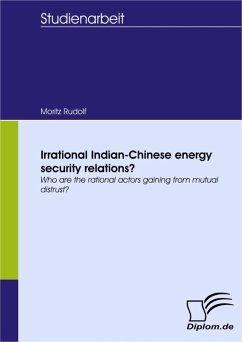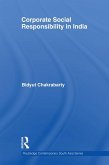Inhaltsangabe:Introduction: India and China are the raising giants of the 21st century. Both countries are ancient civilizations with a rich cultural heritage. Their interactions date back more than 2000 years, when Buddhism got introduced to China through various channels of the Sutra-Route, followed by economic interactions during the Silk Road period . Both countries perceived themselves as the center of their known universe and both countries suffered defeat from European colonial powers. After independence in 1949 and 1947 respectively China (independence indicating the Communist revolution causing Jiang Kai-shek to flee to Taiwan) and India choose the same approach of autarkic state controlled economic development . At the Bandung Conference in 1955, China and India called each other brothers . The Sino-Indian border war of 1962, actually being the aftermath of British dominion over Asia caused a deep-rooted split between the two nations and Asia . Mistrust remained and the border issue has not been solved. In 1978 and 1991 respectively China and India turned themselves towards the global economy, leading to a still ongoing integration and reform process . However, since China¿s reform started 13 years earlier than India¿s, various asymmetries exist between the two Asian giants. Economic indicators reveal that China is not only more than one decade ahead of India, it is also gaining distance . Regarding global integration, China has become a core player in the global economic structure, while the same cannot generally be said about India. Another difference between China and India is the way they are governed. India is a democracy , while China is ruled by the Chinese Communist Party (CCP) . As a result China is considered more pragmatic in its decision making process compared to India . On the other side India¿s system could be considered superior to China¿s in terms of exogenous shock resistance, for instance in a period of economic recession, China has not experienced since the beginning of reform. India hosts many unused resources and has a demographic advantage . Therefore it is quite likely that in the future India¿s role in the world will be equal to China¿s. Sino-Indian relations have been following the pattern of a roller-coaster ride. In 2005 a Strategic Partnership Agreement was signed between India and China . However since that event mistrust has dominated their relationship again . Asymmetries in perception are also [...]
Dieser Download kann aus rechtlichen Gründen nur mit Rechnungsadresse in A, B, BG, CY, CZ, D, DK, EW, E, FIN, F, GR, HR, H, IRL, I, LT, L, LR, M, NL, PL, P, R, S, SLO, SK ausgeliefert werden.









